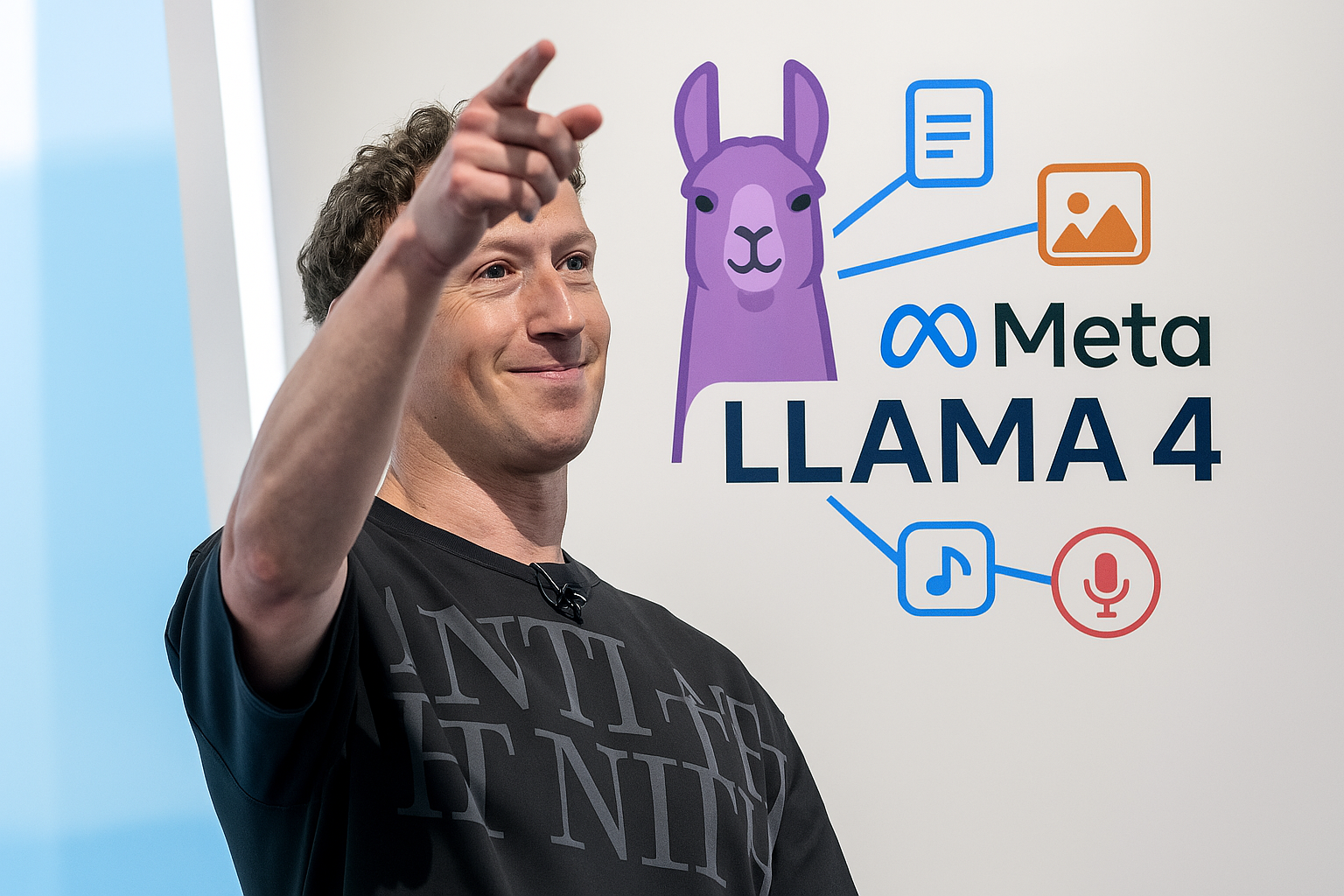Meta, the tech giant widely known for Facebook and Instagram, is once again in the global AI spotlight. The company is racing against the clock to launch its next generation AI model, Llama 4.X, by the end of this year.
This release comes after the lukewarm reception of its Llama 4 models earlier this year, which included Scout and Maverick. Developers and AI experts have expressed concerns over Llama 4’s performance in real world applications such as coding, reasoning, and instruction following.
Meta aims to resolve these issues with the new iteration, hoping to restore confidence and set a new standard in AI capabilities. Meta first introduced Llama 4 in April 2025.
The models Scout and Maverick were designed to process multiple data types text, images, and audio using an advanced architecture called Mixture of Experts (MoE). In this approach, only a subset of model parameters is activated at a time to enhance efficiency.
For instance, Scout operates with 17 billion active parameters from a pool of 109 billion, while Maverick uses 17 billion active parameters from a massive 400 billion parameter pool.
Despite these innovations, the models underperformed in some practical tasks. Developers reported challenges with complex reasoning, coding, and accurately following instructions.
Security assessments also revealed vulnerabilities to prompt injections, raising concerns about their reliability in production environments. These findings prompted Meta to take immediate corrective measures.
Enter Llama 4.X What’s New?
The new model, Llama 4.X (also referred to internally as Llama 4.5), is being developed by the TBD Lab, a specialized team under Meta Superintelligence Labs (MSL). This lab is one of four divisions within MSL, focusing on advanced AI research and production ready models.
The primary objective of Llama 4.X is to overcome the limitations observed in its predecessors and provide a robust, versatile AI solution suitable for real world deployment.
According to experts familiar with the project, the team is working to improve reasoning capabilities, coding proficiency, and instruction following accuracy.
Additionally, bug fixes and security enhancements are a top priority, ensuring that Llama 4.X is safer and more reliable for developers. Dr. Sarah Lin, an AI researcher at Stanford University, explains, The development of Llama 4.X demonstrates how iterative improvements in AI models are crucial.
Each version not only builds on technical advances but also learns from user feedback, making the system more applicable in real world scenarios.
One developer, who requested anonymity, shared their experience with Llama 4, Scout was impressive in handling simple text tasks, but when we tried to use it for complex programming tasks, it failed to provide accurate solutions.
Maverick was slightly better, but performance inconsistencies made it challenging to trust the output for critical projects. This feedback highlights why Meta is heavily investing in Llama 4.X.
The company is not just aiming to release another AI model but to deliver a tool that developers can confidently integrate into applications across industries.

Meta’s Strategic Overhaul in AI Development
Meta’s AI journey has undergone significant restructuring. The formation of Meta Superintelligence Labs (MSL) represents a strategic pivot to build advanced AI systems capable of surpassing human cognitive abilities in specific tasks.
MSL is structured into four teams TBD Lab, FAIR (Fundamental AI Research), Products and Applied Research, and MSL Infra. The TBD Lab, leading the Llama 4.X development, focuses on applied research, bug fixes, and preparing models for deployment.
Mark Zuckerberg, Meta’s CEO, emphasizes the importance of small, specialized teams in developing cutting edge AI. He explains that elite groups can move faster, innovate more effectively, and handle the complexity of advanced AI research better than large, traditional teams.
Several AI experts are closely monitoring Llama 4.X’s progress. Dr. Elena Martinez, an AI ethics consultant, comments, Meta’s approach to addressing real world task limitations and security issues is promising.
If Llama 4.X successfully addresses these challenges, it could set a benchmark for future AI development. Similarly, John Wu, a senior software engineer, believes that the model’s success will heavily rely on user adoption and real world performance.
An AI model can have impressive specifications, but its real value comes when developers can trust it for practical tasks. Llama 4.X must show consistency and reliability to gain market confidence.
Anticipations and Challenges
The AI community is eagerly waiting to see how Llama 4.X performs upon release. Analysts expect improvements in reasoning, multitasking, and coding abilities. Security features and robustness against attacks are also critical.
However, challenges remain. AI development at this scale is complex, and integrating feedback from a wide range of real world applications can be daunting. Additionally, internal reports suggest some organizational instability at MSL, which could impact timelines.
Despite this, Meta remains committed to delivering a high quality product by year end. From a developer’s perspective, AI tools like Llama 4.X can dramatically increase productivity when they function as intended.
Personally, I’ve experimented with previous Llama versions and found that while they excel in simple natural language tasks, their performance drops with complex instructions.
The anticipation surrounding Llama 4.X is justified, as many hope it will bridge this gap and provide a reliable AI assistant for both individual developers and enterprise applications.
Llama 4.X is not just another AI model. It represents Meta’s vision of creating a personal superintelligence a system capable of performing tasks beyond human abilities in efficiency, speed, and accuracy.
Success with this model could redefine industry standards and influence the development of AI across sectors such as healthcare, finance, education, and more.
Moreover, the iterative development approach shows the importance of learning from past shortcomings. By addressing real world issues and security vulnerabilities, Meta is ensuring that its AI is not just technically sophisticated but also practical, reliable, and safe.
Meta’s Llama 4.X is poised to be a pivotal milestone in the company’s AI journey. With a focus on correcting past shortcomings, enhancing reasoning and coding capabilities, and improving security.
This model has the potential to set new benchmarks in artificial intelligence. While challenges remain, the anticipation within the AI community highlights the significance of this development.
As the year end release approaches, developers, researchers, and enthusiasts worldwide are watching closely. If successful, Llama 4.X will not only restore faith in Meta’s AI initiatives but also demonstrate how iterative improvements, user feedback, and strategic restructuring can lead to breakthroughs in advanced technology.

